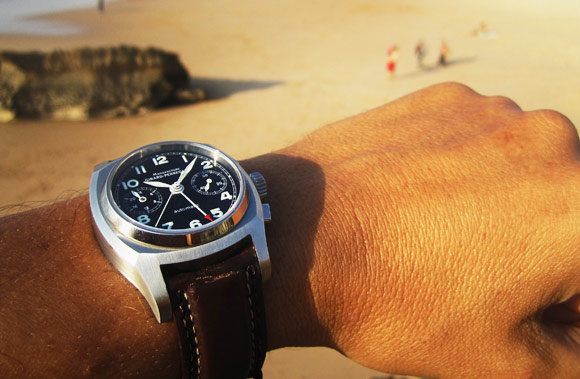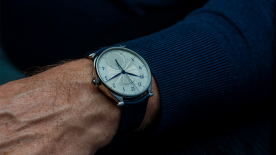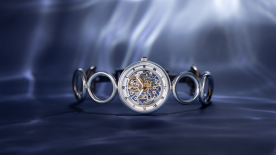I grew up really believing the Seventies were a tasteless decade: those bell-bottomed pants, hippie floral patterns and disco sound music always seemed corny to me. Until I realized, with a bit of perspective, that the following decade was actually worse… especially in watchmaking. Taste is always a highly subjective matter, but in my opinion, timepieces don’t get any uglier (yes, that’s the word) than those produced from the Eighties until the early Nineties – whereas the funky fashion that started in the late Sixties and spread throughout the following years provided some of the coolest designs and color combinations in wristwatch history.
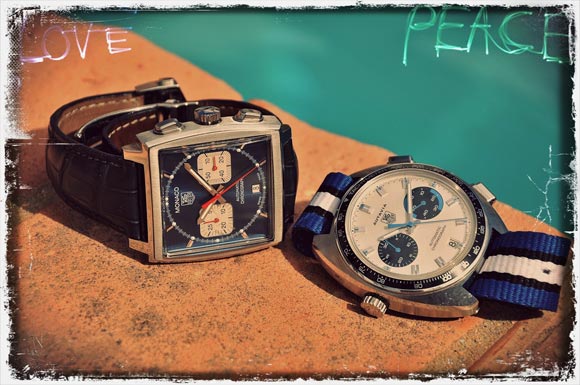
The Seventies are indeed back with a bang. Daft Punk recently amassed four Grammys and their 1970s-inspired tune Get Lucky tune was the hit of 2013. Last year, Argo won the Oscar for Best Picture and the mini-series Behind the Candelabra: My Life With Liberace’ collected several Emmys and Golden Globes; Rush portrayed the vertiginous golden era of Formula 1, when sex was safe and driving dangerous. Adidas originals are the trendiest sneakers around. Erotic literature is also in, following the success of 50 Shades of Gray four decades after Emmanuelle and Histoire d’O hit the cinemas and shocked the world. Beards, which had been out of fashion since then, are now suddenly popular as well. It certainly was a pivotal decade, one that included the worst crisis ever experienced in the watch business due to the quartz revolution that threatened to condemn traditional mechanical timepieces to obsolete status.

Anti-conventional for an elite
Albeit in a very specific and focused way, Seventies-inspired re-editions and reinterpretations are making a stir in watchmaking. Alongside icons that have never really disappeared from the catalogues such as Audemars Piguet’s Royal Oak (since 1972) or Patek Philippe’s Nautilus (from 1976 on), there have been many reissues; yet, most of them are limited editions – after all, the mainstream commercial trend influenced by China leans more towards simple round shapes and minimalist aesthetics, whereas Seventies designs are so unconventional and daring that they need to be fully understood and are thus especially popular among an educated clientele who can relate to specific vintage aesthetic codes.
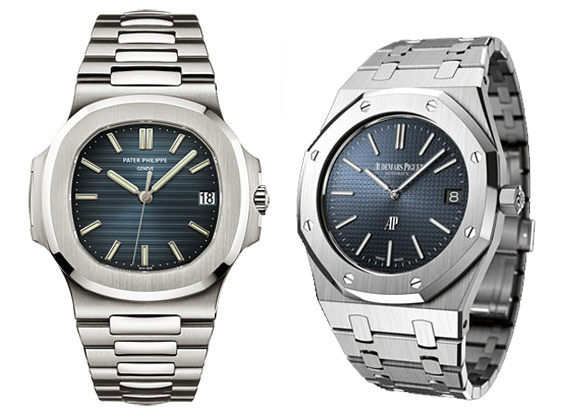
After the classic timepieces issued during the most part of the Sixties, by the end of that decade the main traits of the Seventies were already being felt; in 1968, Patek Philippe’s Golden Ellipse and its oval shape anticipated an era when round watches were the rare exception and geometric forms ruled the collections; in 1969, Heuer issued its first automatic chronograph movement on a square Monaco and both the Carrera and the Autavia adopted cushion cases.
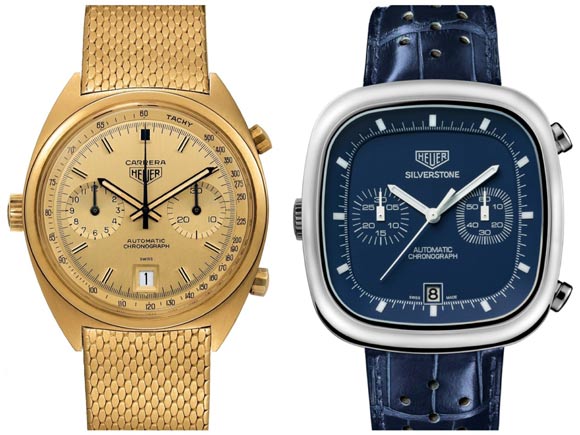
The chromatic palette was wider and bolder than it had ever been, highlighted especially by orange and blue hues. Graphic and smoked dials provided funky visuals, while integrated case&bracelet combinations also became a big trend, fueled by Gerald Genta’s creative work for various top brands. I always thought the legendary Swiss designer really milked the cow, gaining fame and fortune by clearly adapting his Royal Oak concept to other famed 70s designs such as the Nautilus or IWC’s Ingenieur.
Resurrecting icons
The Seventies revival started slowly late in the Nineties, following the renaissance of mechanical watchmaking: among the first signs were TAG Heuer’s reinterpretation of the Monaco, along with the Vintage 1970 chronograph by Girard-Perregaux; and the trend has become more evident in recent years, with the auction of the Haslinger Collection – the first exclusive Heuer auction, based mainly on 1970s pieces – amassing 475,764 pounds and setting a few stunning new world records for vintage Heuer timepieces.
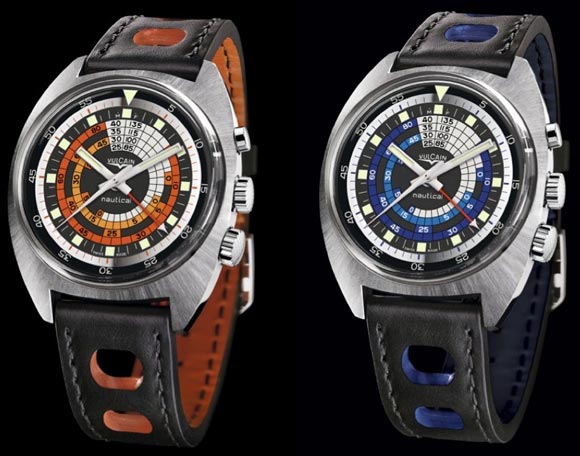
Following in TAG Heuer’s path (even though the Autavia and Silverstone re-editions were not a commercial success), Zenith also brought back designs that became famous in the early 1970s and many other brands invested in limited edition series inspired by that period. Oris unveiled the Chronoris; Eterna launched the Heritage Super KonTiki 1973; Tudor based the brand’s renaissance on the resurrection of the 1970 Chronograph, having last year launched the Heritage Chrono Blue (aka 1973 Monte-Carlo); Vulcain unveiled the Nautical Seventies. Porsche Design went as far as presenting a box containing the re-edition of the 1972 titanium chronograph along with the brand’s 1978 sunglasses. Hamilton’s reissue of the 1971 Pan Europ chronograph was so successful it went from a limited series straight into the regular collection.

Longines also invested in the cushion-case retro-style, introducing the Heritage 1973. Glashütte Original created the Seventies, using a TV screen shape and the period's typical integrated case/bracelet design. And Omega started the brand’s own Seventies nostalgic revival with the 1970 Seamaster Ploprof, having relaunched most recently the Seamaster Bullhead and the Speedmaster Mark II. Even smaller companies are proudly inspired: Ralf Tech with its WRV “V” Automatic 1977, while the whole March LA.B collection is an exercise in 1970s style.
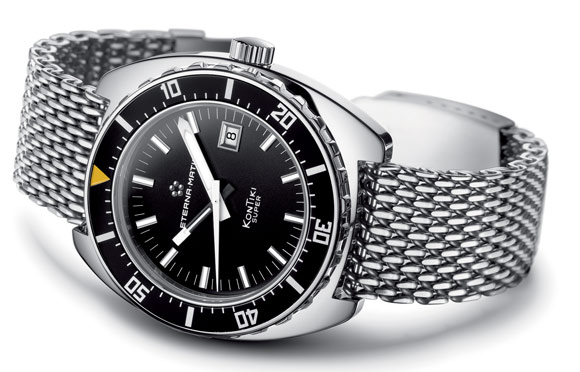

But it wasn’t just the small or mid-range brands that decided to capture the imagination of aficionados in their 40s and 50s with niche products. In the high-end spectrum, even Vacheron Constantin took a risk with the 1972 Prestige – boasting a curved and asymmetrical case housing one of the world's thinnest mechanical movements (Calibre 1003).
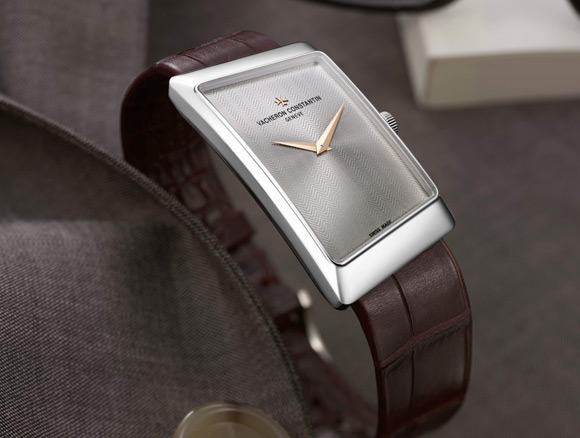
Almost every 1970s re-edition or reinterpretation is based on models launched right before the biggest crisis that ever hit the traditional watch industry, when the advent of quartz caused a decline in mechanical watchmaking that led to the extinction of a thousand companies and put more than 50,000 employees out of job. Today the industry is facing a new technological challenge from the so-called smartwatches – and a remake of that almost fatal crisis from 40 years ago is certainly not something the industry will want!
